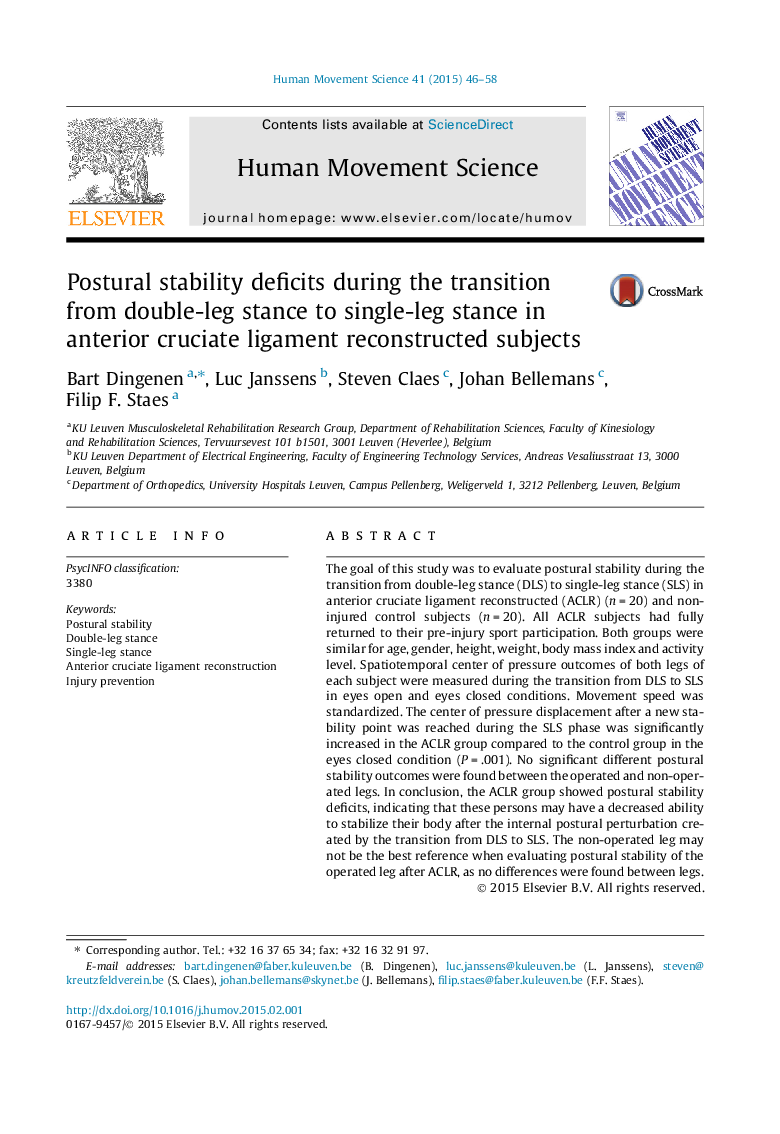| Article ID | Journal | Published Year | Pages | File Type |
|---|---|---|---|---|
| 7291955 | Human Movement Science | 2015 | 13 Pages |
Abstract
The goal of this study was to evaluate postural stability during the transition from double-leg stance (DLS) to single-leg stance (SLS) in anterior cruciate ligament reconstructed (ACLR) (n = 20) and non-injured control subjects (n = 20). All ACLR subjects had fully returned to their pre-injury sport participation. Both groups were similar for age, gender, height, weight, body mass index and activity level. Spatiotemporal center of pressure outcomes of both legs of each subject were measured during the transition from DLS to SLS in eyes open and eyes closed conditions. Movement speed was standardized. The center of pressure displacement after a new stability point was reached during the SLS phase was significantly increased in the ACLR group compared to the control group in the eyes closed condition (P = .001). No significant different postural stability outcomes were found between the operated and non-operated legs. In conclusion, the ACLR group showed postural stability deficits, indicating that these persons may have a decreased ability to stabilize their body after the internal postural perturbation created by the transition from DLS to SLS. The non-operated leg may not be the best reference when evaluating postural stability of the operated leg after ACLR, as no differences were found between legs.
Keywords
Related Topics
Life Sciences
Neuroscience
Cognitive Neuroscience
Authors
Bart Dingenen, Luc Janssens, Steven Claes, Johan Bellemans, Filip F. Staes,
